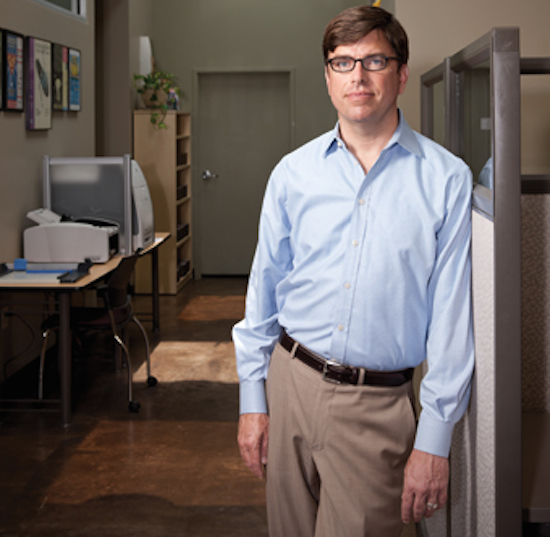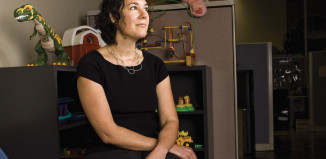Paul Scott knows better than most just how much has happened in the last 25 years when it comes to the treatments, perceptions and policies surrounding HIV and AIDS. In 1996, Scott, now the executive director of AIDS Services of Austin (ASA), was in a hospital bed with potentially only hours to live before a miracle in the form of new protease inhibitors came into his life. Three months later, he was snorkeling while on vacation.
Now a healthy and active man, he’s at the helm of ASA as it gets ready to celebrate its 25th year. To say there have been changes in the world of HIV and AIDS services in that time would be an understatement. In 25 years the disease has morphed from a little-understood and much-feared killer to a disease that is better understood but perhaps, to the detriment of many, more isolated.
The first Central Texas AIDS case was reported in 1983, and in that same year Paul Clover founded the Waterloo Counseling Center to give the LGBT community affordable mental health services. Waterloo, which still operates today, founded the Austin AIDS Project, which was incorporated into AIDS Services of Austin in 1987.
“As you look at the history of the disease, the first two goals were palliative care, helping people to die with dignity and addressing their social support needs because they’re isolated from family. And, educating people about the disease and encouraging safe sex behavior,” Scott said. “It wasn’t until 1985 when people really figured out how [the disease] works.”
Initially, there was a grassroots response to the disease in Austin, Scott continued. Many of those affected by HIV and AIDS were not out to their families, employers or the community and had a limited set of resources. The gay and lesbian community, in particular, galvanized and came together to take care of its own.
When the Texas Commissioner of Health proposed in 1986 that gay men suspected of having HIV and AIDS be quarantined, Glen Maxey, of the Austin AIDS Project, helped lobby against the quarantine, and the proposal was withdrawn.
For those who couldn’t be out, stigma led to dangerous behaviors, and social isolation meant no support network. In 1989, ASA hired its first gay men’s outreach specialist to help address that issue. The organization also added a legal program and offered ancillary services, like the Buddy Program, to help its clients. And then, in 1996, came new medications that changed everything related to HIV and AIDS.
If the political community had been slow to acknowledge HIV and AIDS—President Ronald Reagan only mentioned the word “AIDS” in the last year of his term—the medical community had been making fast advances in the 1980s and ‘90s. Rattling off a list of acronyms, Scott recalled that as new drugs went into development, people were trying to get them into drug trials as fast as possible. When the first protease inhibitors came on line, HIV no longer became an automatic death sentence for those infected.
With that change, ASA shifted its focus to long- term care and services and expanded its range. The organization now serves more than 1,600 clients a year and impacts nearly 10,000 people a year through outreach and testing. And its services don’t end there. In fact, ASA has a stunning array of resources, from food assistance to a dental program and medical case managers. And, they collaborate with other HIV and health care organizations around the city, including the hospital systems, to most effectively reach people who are at risk or who are living with the disease.
“A lot of people don’t realize how much we do for people affected by HIV and AIDS,” Scott said.
And there’s still a lot of work to be done.
“A continued challenge continues to be the stigma, particularly in communities of color,” he continued. “Seven percent of the Austin population is African-American—but 55 percent of new [HIV] infections among females are in black women. And 19 percent of new infections among men in the Travis County area are among African-American men.”
ASA is actively reaching out to those communities and building partnerships with churches, whose pastors are trying to take away the stigma by talking about getting tested and making safe behavior more of a norm.
“Another challenge we see is HIV falling off the radar as far as perception of it as an emergency health issue…people think there’s a cure, or that it’s as simple as taking one pill a day. You see images of people looking healthy…that’s a barrier to people understanding they need to continue with safer sex behaviors, and to get counseling and get tested.”
The organization’s testing program is a bright spot in that regard, with a positivity rate twice the national average. That shows it’s hitting the right populations and building trust by maintaining anonymity and confidentiality.
At 25, ASA is not resting on its laurels. It’s wrapping up the first year of its strategic plan, which calls for the organization to be in line with the national HIV strategy and provide a more enhanced set of integrated health services. That means it will soon expand its programming to include STD testing, enhance its services for those living with HIV and expand its dental clinic in 2013.
“This organization was founded by volunteers who came together in the midst of a crisis,” Scott said. It’s upon that legacy we’ve built this organization, and it’s because of their courage and responsiveness that we’re here honoring their legacy.”




































